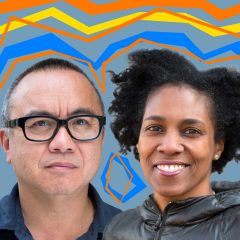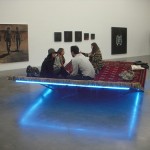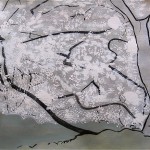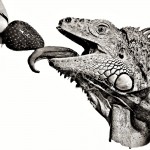This week’s Weekly has my article about the Hadrosaurus foulkii exhibit at the Academy of Natural Sciences. Below is the copy with some pictures and a little video I made when I visited the exhibit.
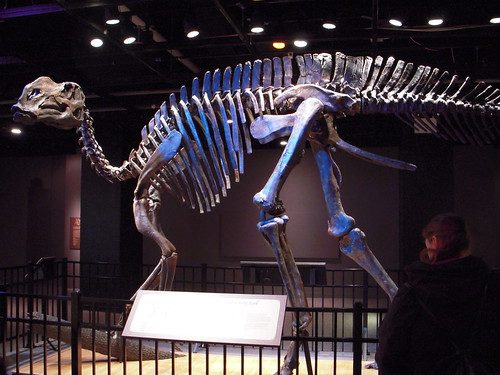
In most science museums, dinosaur skeletons are mounted upright, as if the bones just walked through the front doors. But it wasn’t always this way. Before 1868 dinosaur bones were stored flat in glass vitrines like other inanimate specimens. So who got the dinosaurs on their feet?
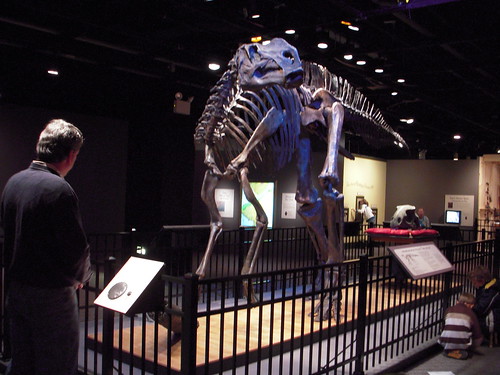
Note the Victorian wrought iron fence around the dino.
“Hadrosaurus foulkii: The Dinosaur That Changed the World” at the Academy of Natural Sciences explains the invention of the standing dinosaur mount, conceived by the British artist Benjamin Waterhouse Hawkins. The show is exhibited beautifully in a brightly painted room with a chandelier and a wrought-iron fence around the dinosaur. The exhibit includes push-button audio and video feeds to give a background on the dinosaur as well as provide context for Hawkins’ work.
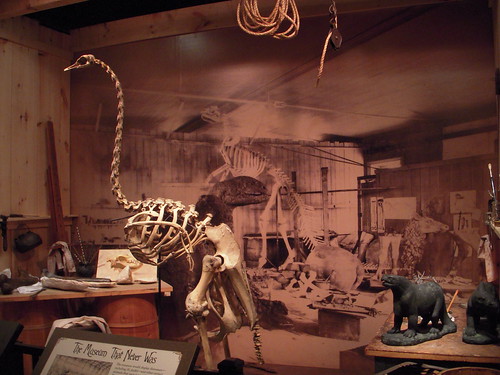
Benjamin Waterhouse Hawkins’ studio, as envisioned for the show. That’s an ostrich skeleton and on the right the small models are how Hawkins envisioned some “fleshed out” dinosaurs.
As a companion to the show, the Academy has published All in the Bones, a biography of the artist written by Hawkins’ descendant Valerie Bramwell and Academy Senior Fellow Robert M. Peck. The book includes new research as well as some salacious details from Hawkins’ personal life, like that he had two wives who knew nothing about each other.
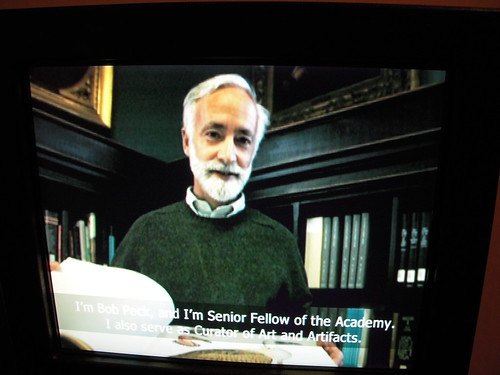
Robert Peck, pictured in a video in the exhibit.
Hawkins was a respected artist and illustrator for Charles Darwin and Thomas Huxley, but he was also an entrepreneur and a showman. For the Crystal Palace Exhibition in London, he created massive sculptural dinosaurs in Sydenham Garden and then threw a dinner party in the belly of the sculptural mold of a lifesized Iguanadon. This stunt earned him publicity and a reputation for wild antics.
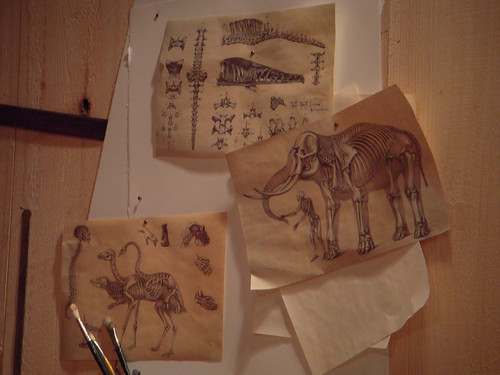
Samples of Hawkins’ illustrations pinned to the wall in the studio replica in the exhibit. Hawkins was a noted illustrator.
I spoke with Peck when the Hawkins biography came out last summer. He told me the artist—who came to New York and Philadelphia to work on dinosaur castings—didn’t subscribe to Darwin’s theory of evolution but was still regarded highly in the scientific community.
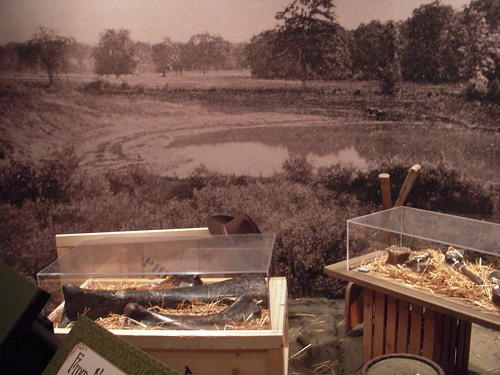
Diorama of the farmer’s field in Haddonfield where they found the dinosaur bones.
“Both sides [of the evolution debate] realized his sheer genius as a draftsman. Both could use his skills. And he was economically hard-pressed so he took on all jobs,” Peck said.
Peck also told me that this region is very important to the study of dinosaurs.
“In the 1800s New Jersey was a hotbed of dinosaurs,” he said. “The first dinosaurs discovered in this country were discovered in New Jersey.”
Take a little mini tour of the show.
Hadrosaurus foulkii was found in Haddonfield and analyzed and authenticated by the Academy’s Joseph Leidy in 1858. In addition to the dinosaur skeleton, the Academy has built a reconstruction of Leidy’s office and a diorama featuring a photo of the farm where the dinosaur was found.
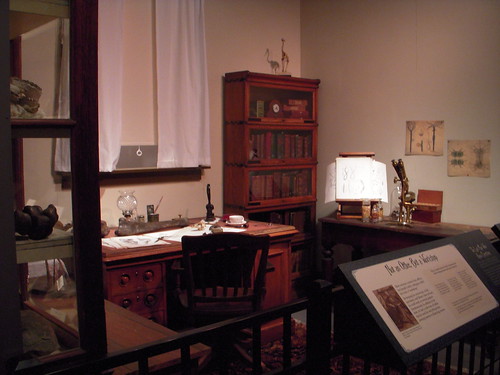
Joseph Leidy’s office, as reconstructed for the exhibit. That is really his desk I believe.
Hawkins’ initial exhibit of the dinosaur drew 100,000 visitors at a time when the museum was open half days and closed all of August, Peck said. “Now we get 200,000 [visitors] a year and we’re open seven days a week, 364 days a year.”
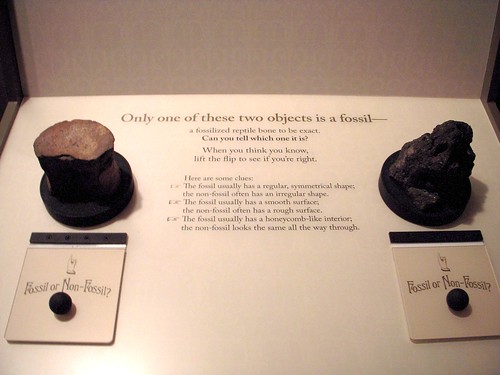
The exhibit has lots of hands on stations with buttons to push to hear or see additional information and this lift up please touch table which I loved.


